Small-ScaleDairy Farming Manual |
Volume 2 |
|
|
|
INTEGRATED FARMING SYSTEMS |
 |
|
Husbandry Unit 1.1: Technical Notes Note: Numbers in brackets refer to illustrations in the Extension Materials. Introduction In most countries in the Asian region, ruminant animals, particularly cattle and buffalo, have an important economic role in village farming systems to provide milk, draught power, manure, meat and hides. The relative value of the products varies from country to country in the region and from place to place within a country. Milk is an important constituent in the diet of large populations in countries like India and Pakistan. Its value is being increasingly recognized in other countries in the region too. Increasing incorporation of milk in the diets of the people in the region focuses attention on the value of milk not only as a source of nourishment for the rural small scale producer but also as a source of supplementary income for them. High population densities in the region make it essential that the production systems should ensure the optimum utilization of scarce land resources, whether it be for production of food or other crops. In this context, the vast capacity of cattle and buffalo to convert crop residues and by-products into economically useful products has to be used to the best advantage of the small scale producer in particular. On the other hand, to obtain the
best productivity from the land and the animals, fodders and legumes have
to be incorporated into the system without adversely affecting the main
crops.
|
|
|
What should you know about dairying as part of integrated farming systems (IFS)?
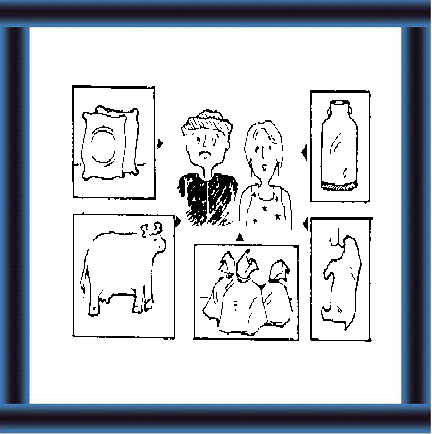 |
What is
IFS and why is it important for you? (5-16)
1 IFS is planning and managing inputs and outputs for maximum benefit. |
 |
How can
you grow fodders, legumes, grasses as part of IFS? (17-24)
2 You can plan
to grow fodders, legumes, grasses:
|
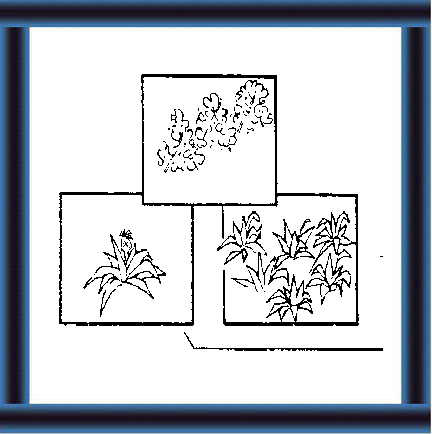 |
Which crop
residues and by-products can you use for feeds? (25-32)
3 You can use
many such as:
|
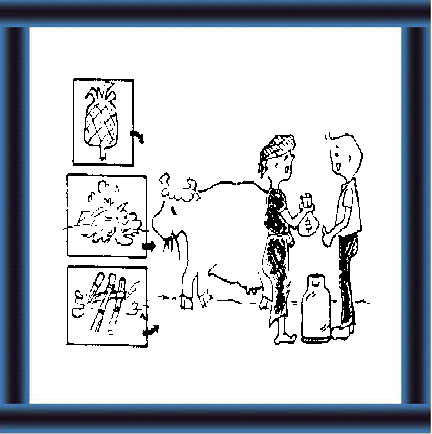 |
What are
the "Six F's" of IFS and how do they fit together? (33-45)
4 The "Six F's" are important things for you to plan and manage on your farm to bring you benefit. |
page 1
What is IFS?
 |
5 IFS is planning and managing your farm |
 |
6
to make the best use of your inputs:
- funds - fertilizers - feeds - labour etc; |
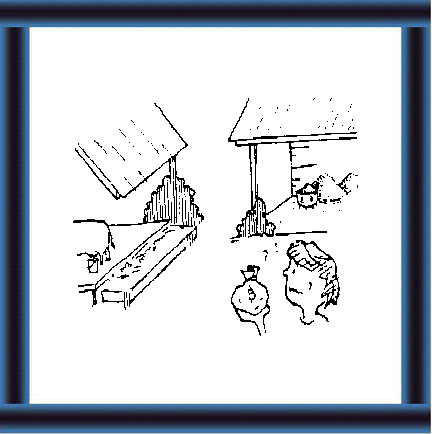 |
7
and to make the best use and/or to get the best price for
your outputs:
- crops - manure - milk - meat etc. |
 |
8
You can plan for and manage your dairy cattle and buffalo
together with your other farm operations
- IFS. |
page 2
Why is IFS important for you?
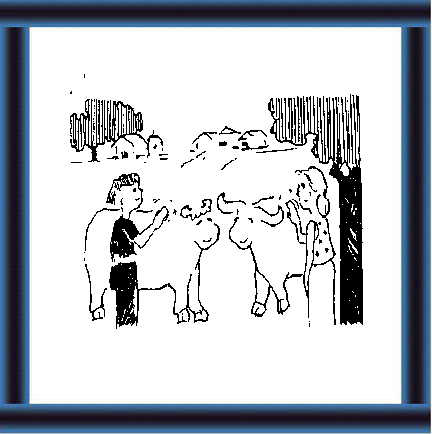 |
9 Cattle and buffalo are important in your farming system and IFS can make the best use of them. |
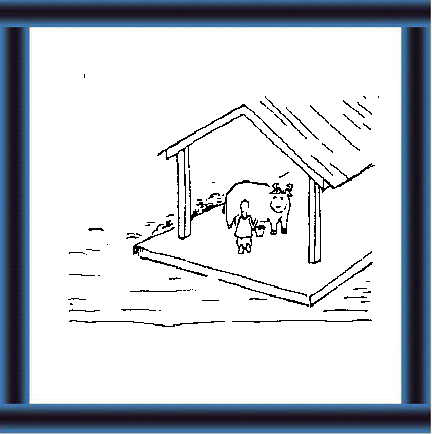 |
10
They provide:
- milk and manure |
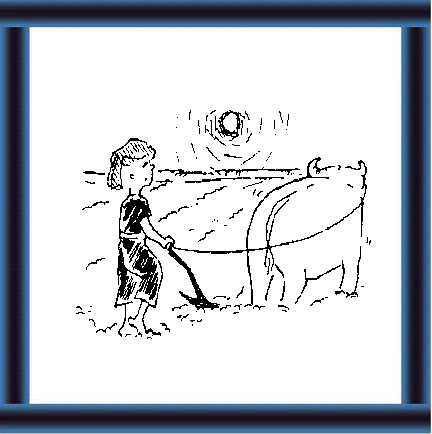 |
11
- draught power |
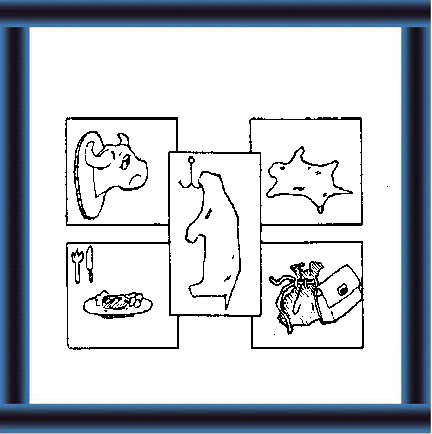 |
12
- meat and hides. |
page 3
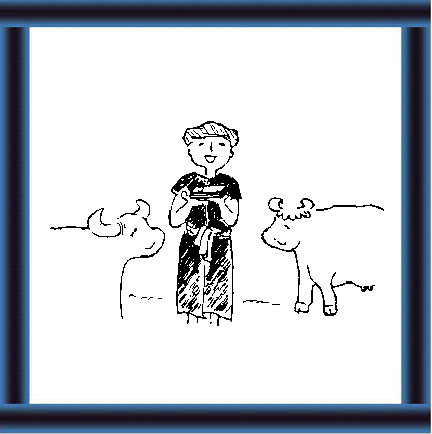 |
13 With IFS you use your land, cattle and buffalo to make more money |
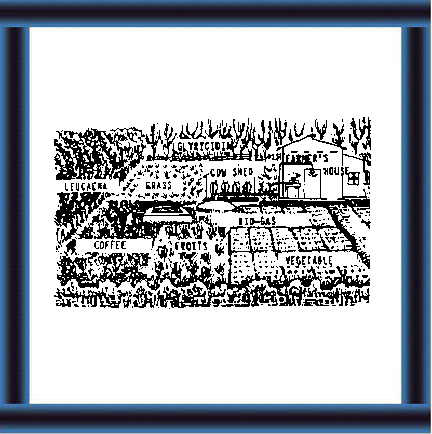 |
14 by growing fodders and legumes with your main crops |
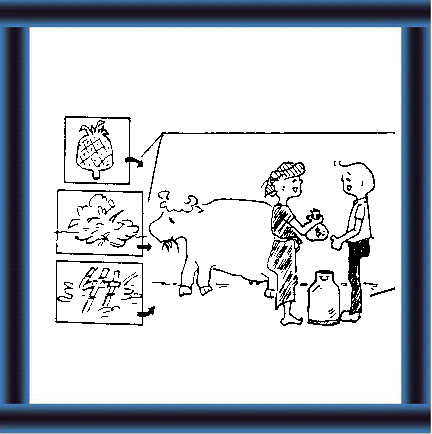 |
15 and by changing crop residues and by-products into things you can sell |
 |
16 and use to feed your family. |
page 4
| Incorporation
of fodder/legumes into farming systems
Fodders, legumes and grasses can be incorporated in crop farming systems either individually or in combinations. Some methods are to grow them: - in marginal areas where no other crop can be grown (19) - along with or under other crops
without adverse effects on main crops, e.g. grasses/legumes under coconut,
legumes (such as Stylosanthes varieties) on paddy field bunds, legumes
along with rice stubble.
|
page 5
How can you grow fodders, legumes, grasses as part of IFS?
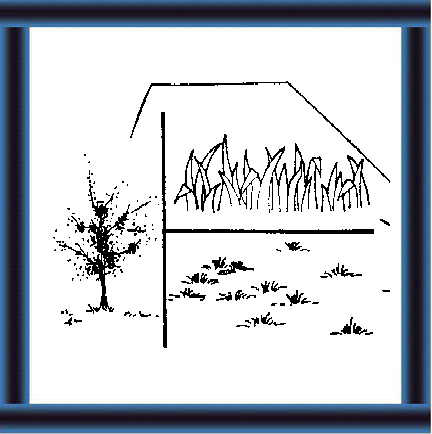 |
17
You can grow
- a fodder - a legume - a grass by itself in your farming system |
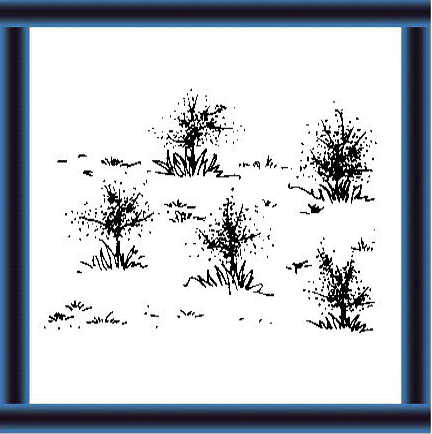 |
18 or you can grow all three in combinations. |
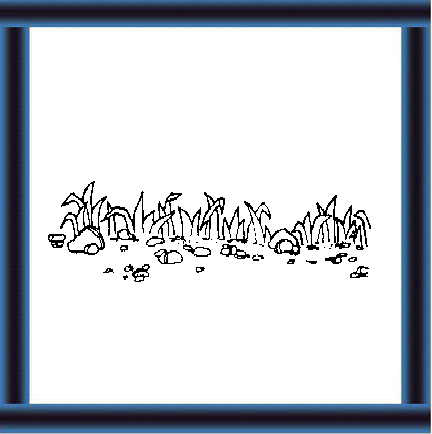 |
19
You can grow fodders, legumes, grasses:
- in areas where you cannot grow other crops, e.g. less productive land |
 |
20
- with other crops e.g. - legumes (such as Stylosanthes) on paddy field bunds - legumes along with rice stubble. |
page 6
| - along boundary fences, e.g. Leucaena and Glyricidia can serve as live fence giving protection to crops in addition to providing roughage. |
page 7
 |
21
- underother crops e.g. - grasses/legumes under coconut |
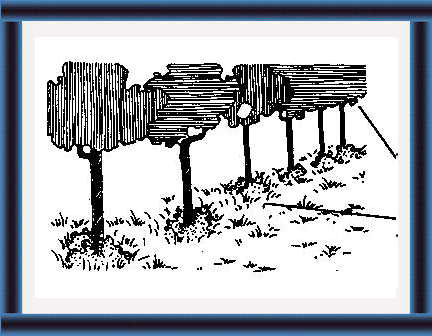 |
22
- grasses/legumes under Tanol rubber trees |
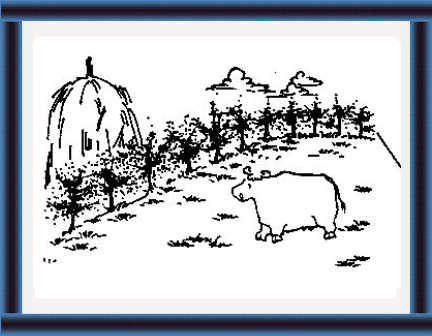 |
23
- along boundary fences e.g. - Leucaena or Glyricidia as a live fence. |
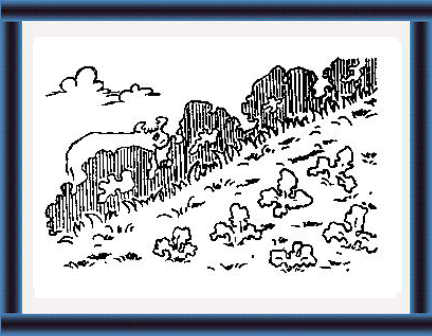 |
24
Fodders, legumes, grasses:
- protect crops from animals - provide roughage. |
page 8
| Crop residues
and by-products
There is a very large number of crop residues and by-products that can be fed to cattle and buffalo corresponding to the varieties of crops grown in the region. Some important ones among them are: Crop residues: - rice straw
|
page 9
Which crop residues and by-products can you use for feeds?
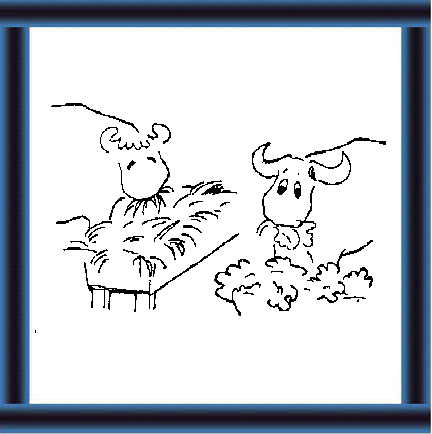 |
25 You can feed many different crop residues and by-products to your cattle and buffalo. |
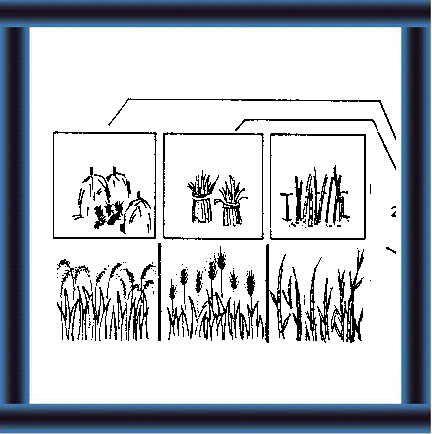 |
26
Crop residues:
- rice straw - wheat straw - sugarcane tops |
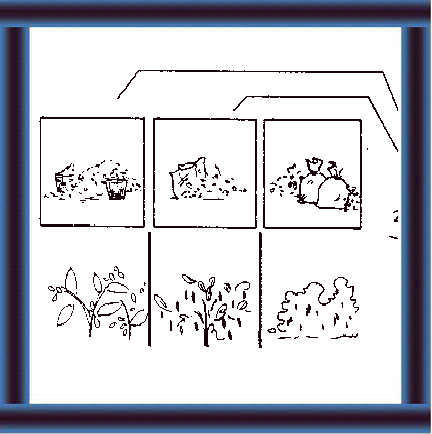 |
27
- cocoa pods - soybean hulls - groundnut (peanut) residue |
 |
28
- corn residue - corn cobs |
page 10
| Agricultural
by-products:
- rice bran
There are many residues and by-products
which can be (and are being) used for cattle/buffalo feeding in localities
where they are available.
|
page 11
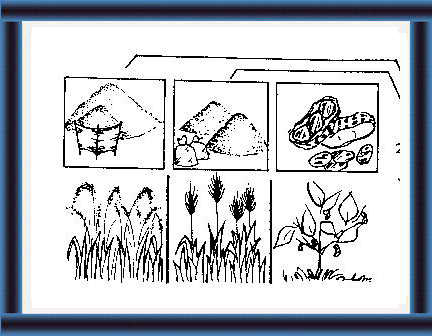 |
29
Agricultural by-products:
- rice bran - wheat bran - soybean meal |
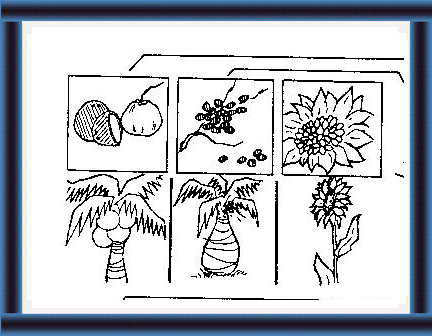 |
30
- coconut cake - palm kernel cake - sunflower cake |
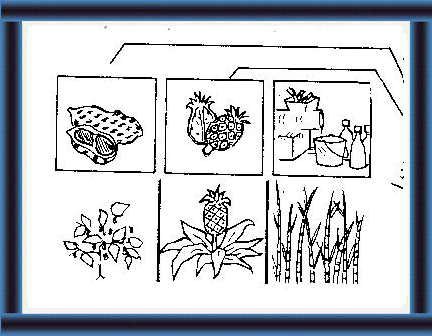 |
31
- groundnut cake - pineapple waste - molasses. |
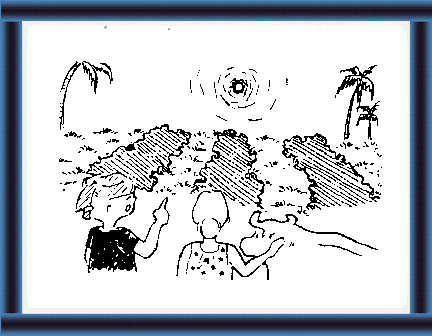 |
32 There may be other useful residues and by-products in your area. Ask other farmers and your extension worker. |
page 12
| Six "F"s
of Integrated Farming
Feed: Increased roughage availability to cattle and buffalo from the above combinations is clear. (33) Fertilizer: The legume components will add to the soil fertility directly through nitrogen fixation. By converting the extra roughage into dung, cattle and buffalo make a large contribution in the production of organic fertilizer and improved soil fertility (34-35) Fence:
The tree fodders and legumes such as Glyricidia and Leucaena can be grown
in such a way as to provide live fence or hedge along the boundaries. (36)
|
page 13
What are the "Six F's" of IFS?
 |
Feed
33 You get more roughage for your cattle and buffalo. |
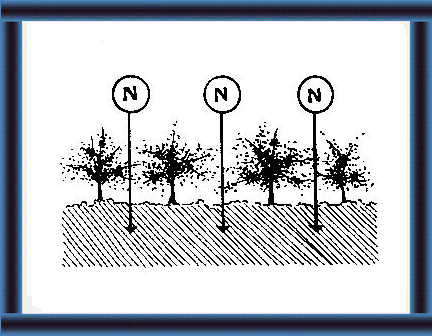 |
Fertilizer
34 The legumes make your soil more fertile by adding nitrogen. |
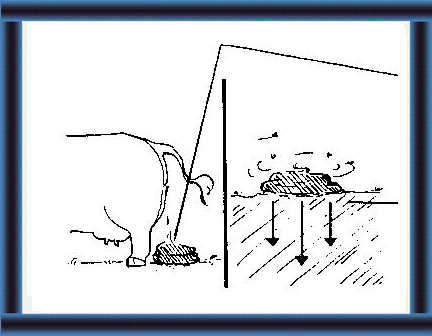 |
35 Your animals change the roughage to manure which makes your soils more fertile. (See H. 1.2 Compost Manure) |
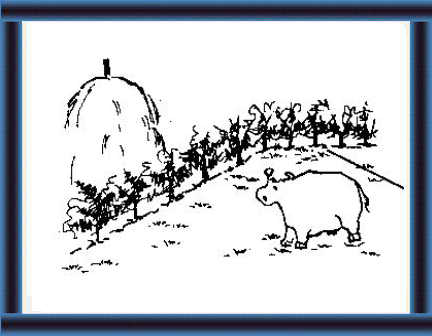 |
Fence
36 You can grow tree fodders and legumes (e.g. Glyricidia and Leucaena) as a live fence. |
page 14
| Fuel: Mature branches from fodder/legume trees can be used as fuel. In some areas dried dung is also used as fuel. A more efficient way, however, is to pass the dung through a bio-gas plant which yields bio-gas as a fuel and leaves the slurry for making compost. (37-40) |
page 15
Fuel
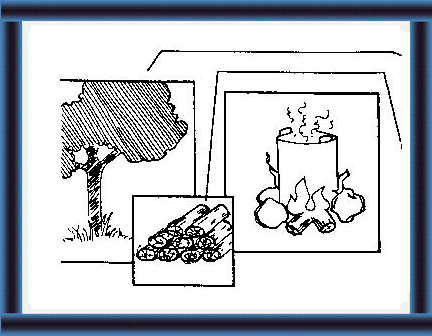 |
37
You can use:
- mature branches from fodders, legume trees |
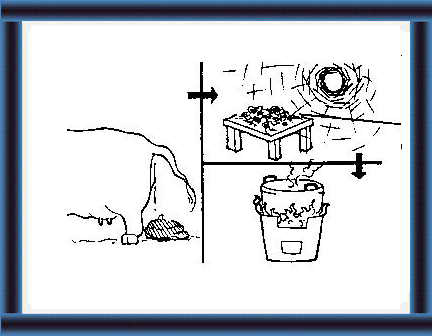 |
38
- dried manure |
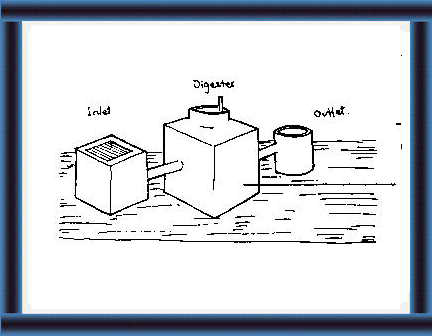 |
39
- bio-gas from manure in a bio-gas plant. |
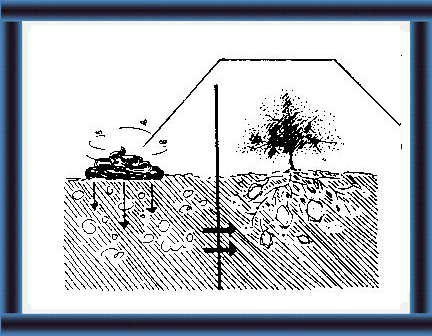 |
40 This is good because you can use the slurry from the bio-gas plant for making compost. |
page 16
| Food:
Food for the human population by increasing the production of crops, milk
and meat. (41)
Funds: Higher income for farmers from increased crop production and the sale of surplus milk and animals. (42) |
page 17
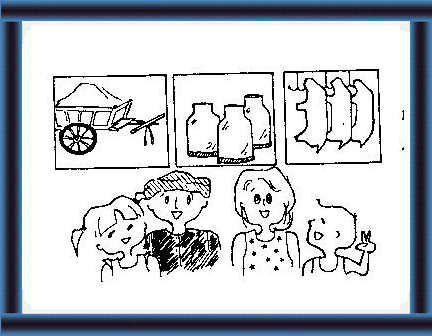 |
Food
41 You get more crops, milk and meat for your family. |
 |
Funds
42 You get more money from the sale of surplus crops, milk and meat. |
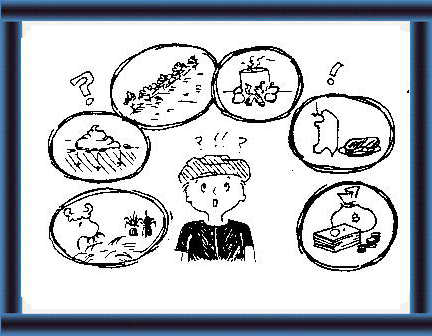 |
43 How do the "Six F's" fit together? |
page 18
| 44
Well prepared land for IFS
|
page 19
| 45
Dairy animals in IFS
|
page 20
|
page 21